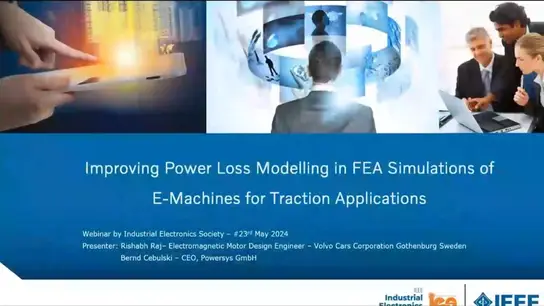AG-13 Design and Single Rotor Fault Analysis of A Magnetically Geared Segment Stator Contra-Rotating Switched Reluctance Motor for flying vehicles application
Shu Chuen Ip, Ka Wai Eric Cheng, Siu Wing Or
Oral
13 Jan 2025
Flying vehicles is a novel idea for the rapid development of Low Altitude Economy which provides the possibility for both road and aerial transportation. Switched reluctance electric motors are generally favourable considering their low cost, simple structure and reliable performance under periodic shock experience during the take-off and landing cycle which is not favourable to permanent magnet motors. Additionally, contra-rotating propellers or axial compressors have shown attractive performance for flying vehicle applications. [1][2] Some research investigated double-rotor switched reluctance motors [3], [4], [5], [6] but none of them studied the torque distribution to two geared rotors [7] which is important for propeller matching for the engine. Therefore, a magnetically geared segment stator contra-rotating switched reluctance motor is proposed in this paper to power a contra-rotating propeller without a mechanical gearbox. The torque performance and flux distribution for the mentioned motor are analyzed. Moreover, the single-rotor fault operation performance characteristic is investigated to provide crucial knowledge when the flying vehicle has a partial failure in one of the rotors. during landing and require full power on a propeller to go around which has not been investigated by other double-rotor switched reluctance motor research.References: [1] Y. Zhong, S. Huang, D. Luo, CES Transactions on Electrical Machines and Systems, Vol. 2, p. 220-225 (2018) [2] N. M. Nouri, S. Mohammadi, Ocean Engineering, Vol. 167, p. 397-404, (2018) [3] W. Uddin and Y. Sozer, 2015 IEEE Energy Conversion Congress and Exposition (ECCE), p. 3972-3978, (2015) [4] W. Sun, Q. Li, L. Sun and L. Li, IEEE Transactions on Transportation Electrification, Vol. 7, p. 754-765, (2021) [5] T. Guo, N. Schofield and A. Emadi, IEEE Transactions on Energy Conversion, Vol. 31, p. 1278-1286, (2016) [6] A. Ghaffarpour and M. Mirsalim, IEEE Transactions on Transportation Electrification, Vol. 8, p. 2400-2411(2022) [7] Y. Yang, N. Schofield and A. Emadi, IEEE Transactions on Energy Conversion, Vol. 30, p. 671-680, (2015)

